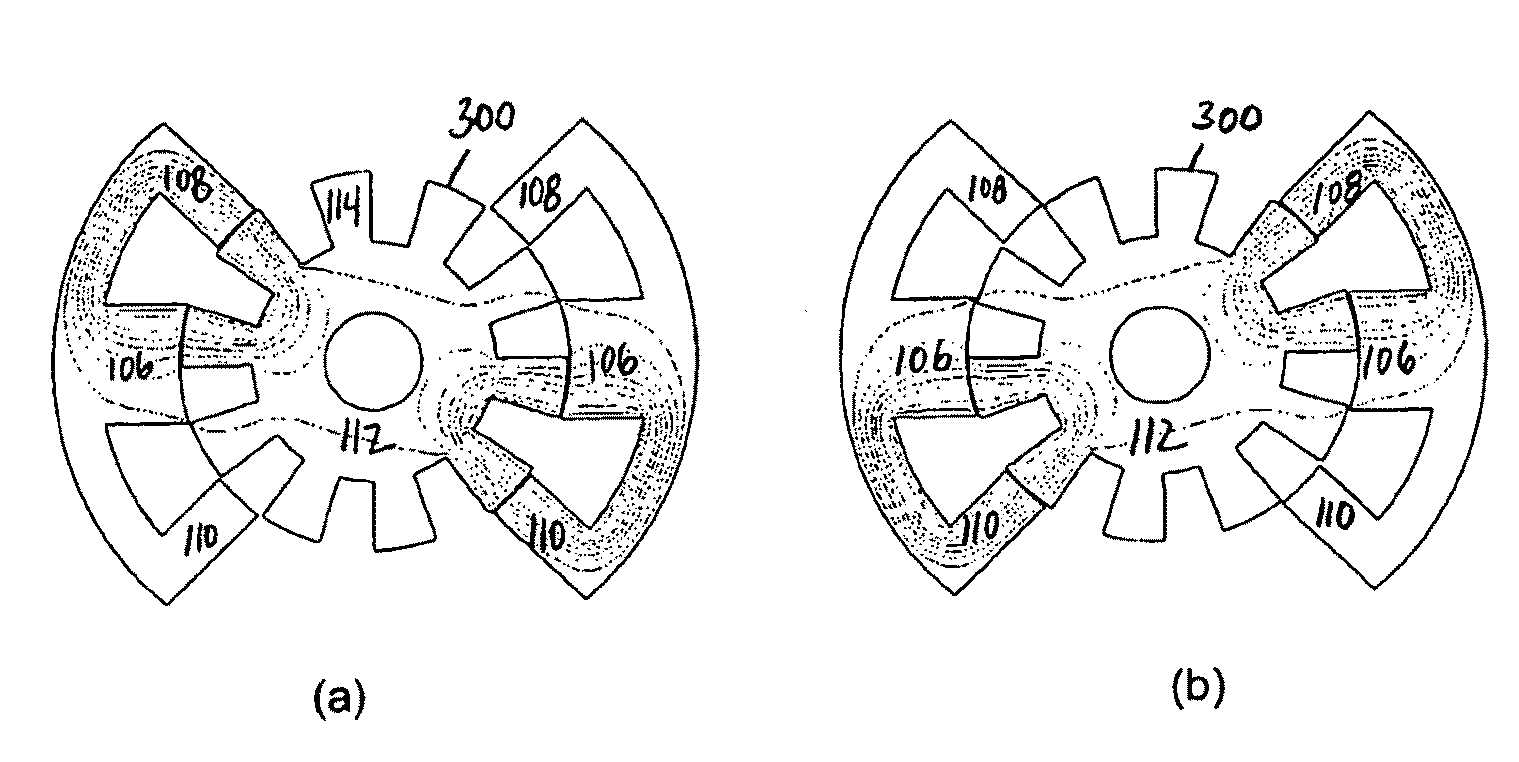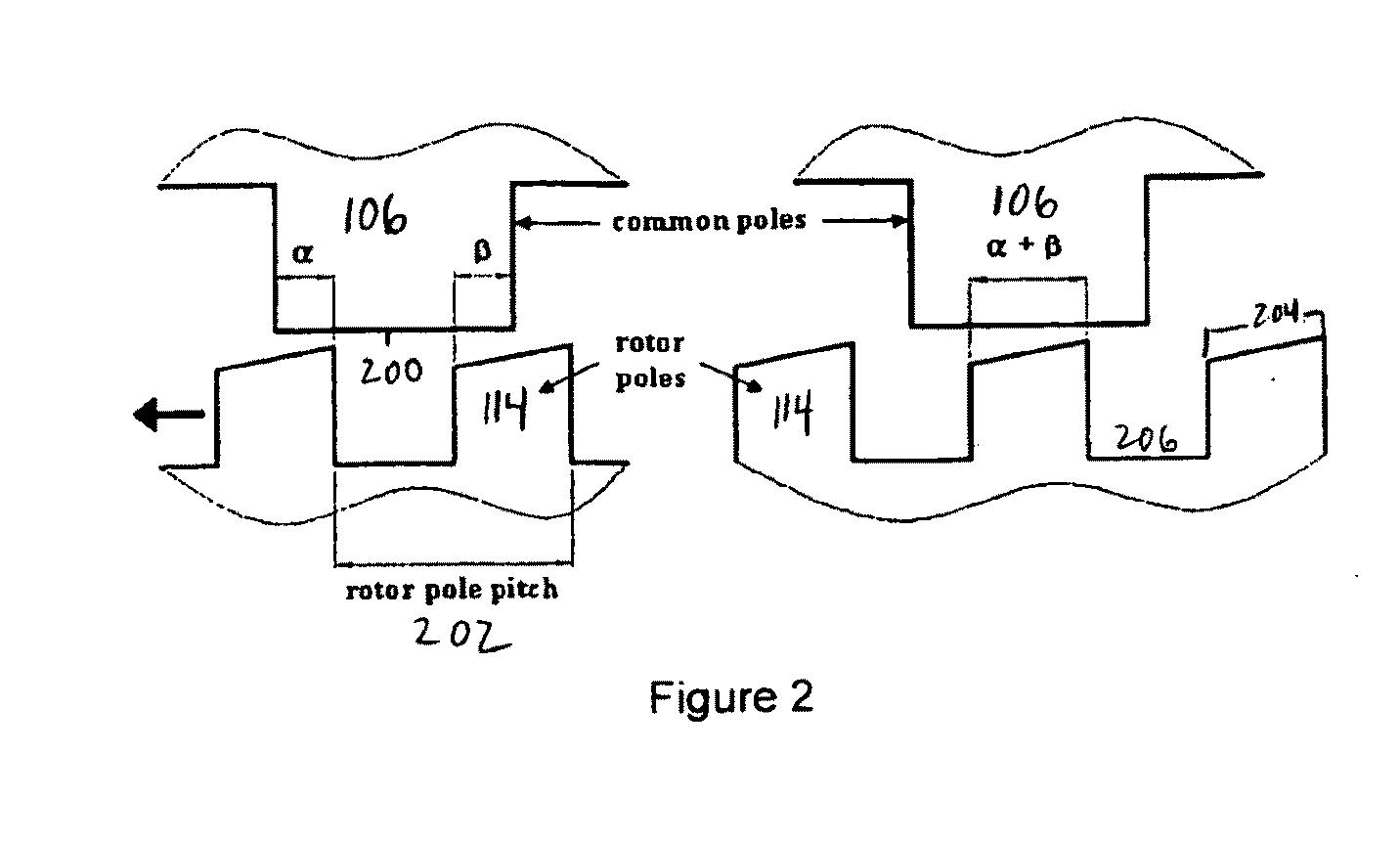Switched Reluctance Machines with Minimum Stator Core
a technology of switching reluctance machines and stator cores, which is applied in the direction of dynamo-electric machines, electrical apparatus, magnetic circuit shapes/forms/construction, etc., can solve the problems of high cost of conventional two-phase srm drives, single-phase srm drives are not suitable for high-performance applications, etc., to achieve cost savings, shorten the path length of magnetic flux paths, and minimize the size of stator cores
- Summary
- Abstract
- Description
- Claims
- Application Information
AI Technical Summary
Benefits of technology
Problems solved by technology
Method used
Image
Examples
Embodiment Construction
[0034]Reference will now be made in detail to the present exemplary embodiments of the invention, examples of which are illustrated in the accompanying drawings. Wherever possible, the same reference numbers will be used throughout the drawings to refer to the same or like parts.
[0035]Examples of a novel two-phase SRM drive using physically separate and discontinuous core structures with minimum stator iron core are disclosed for high torque applications using short-pitch windings (i.e., concentric coil windings). Generally, the principles of such an SRM drive are explained below with reference to an exemplary “E-core” configured embodiment where the discontinuous stator core structures each have an arced main outer segment and are each shaped like an “E” with their respective poles. Other exemplary embodiments of the stator core structure use an angled main outer segment and are referred to as an “L-core” configuration while still other embodiments use a substantially straight main...
PUM
 Login to View More
Login to View More Abstract
Description
Claims
Application Information
 Login to View More
Login to View More - R&D
- Intellectual Property
- Life Sciences
- Materials
- Tech Scout
- Unparalleled Data Quality
- Higher Quality Content
- 60% Fewer Hallucinations
Browse by: Latest US Patents, China's latest patents, Technical Efficacy Thesaurus, Application Domain, Technology Topic, Popular Technical Reports.
© 2025 PatSnap. All rights reserved.Legal|Privacy policy|Modern Slavery Act Transparency Statement|Sitemap|About US| Contact US: help@patsnap.com



